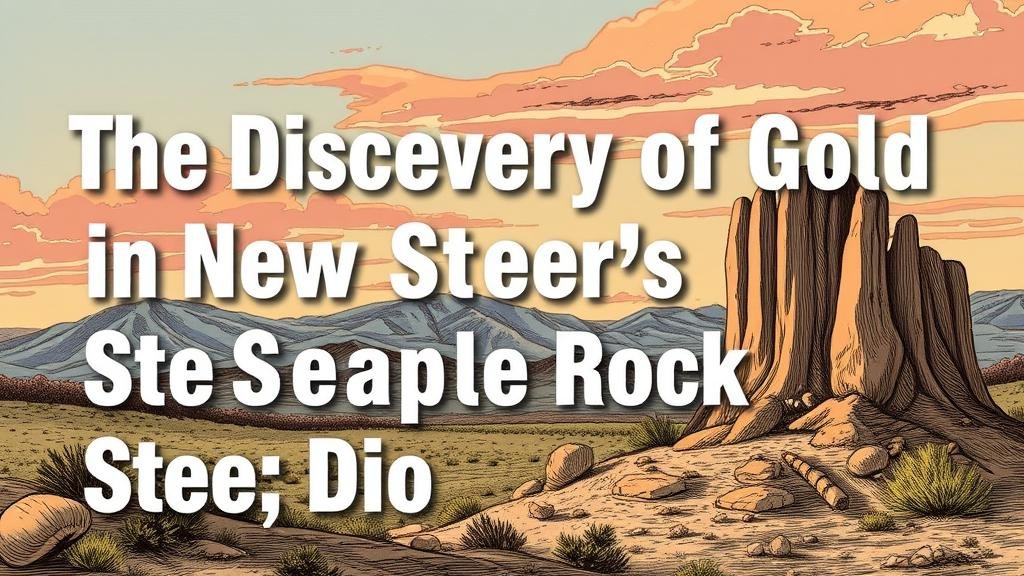The Discovery of Gold in New Mexico’s Steeple Rock District
The Discovery of Gold in New Mexico’s Steeple Rock District
The discovery of gold in the Steeple Rock District, located in New Mexico, marked a significant event in the state’s mining history. This region became a focal point for prospectors and investors in the late 19th century, contributing to the national gold rush phenomenon. This article explores the circumstances surrounding the discovery, the subsequent mining activities, and the broader implications for the economy and society of the period.
Historical Context of Gold Discovery
The Steeple Rock Districts gold discovery can be traced back to the larger trends of mining in the American West during the 1800s. Following the California Gold Rush of 1849, prospectors began to scout various regions in search of new opportunities. New Mexico, rich in mineral resources, attracted attention, particularly after the establishment of a more structured mining industry post-Civil War.
- The area surrounding Steeple Rock was first surveyed for silver in the 1870s.
- In 1876, a significant gold discovery was made at the site by a group of prospectors, which led to heightened interest.
The Discovery Process
In the summer of 1876, the discovery of gold was made near the Steeple Rock Ridge. The initial find was a series of small placer deposits along a creek that flowed from the surrounding mountains. This area displayed geologic features indicative of potential gold reserves, including quartz veins and pyrite formations. As word spread of the discovery, the district saw an influx of prospectors hoping to strike it rich.
By the late 1870s, gold mining operations began to take shape, leading to the establishment of numerous claims in the area. The local geology, characterized by volcanic activity and erosion, played a pivotal role in the concentration of native gold, often found alongside silver and copper deposits.
Mining Techniques and Technologies
The mining techniques employed during this period varied significantly based on the complexity of the ore deposits and the available technology. Initially, simple placer mining methods were utilized, where gold was extracted through panning and sluicing. But, as more substantial lodes were identified, the need for advanced techniques arose.
- During the late 19th century, hard rock mining became prevalent, involving the drilling and blasting of solid rock to access the gold-bearing veins.
- Technological innovations such as stamp mills and cyanide extraction processes were introduced, improving gold recovery rates.
Sociopolitical Implications
The gold boom in the Steeple Rock District catalyzed a series of sociopolitical changes in New Mexico. The influx of miners and supportive businesses led to the establishment of temporary settlements that evolved into more permanent towns, significantly impacting the local economy.
Also, this era saw tensions between miners and indigenous populations, as well as conflicts over land rights. rapidly growing mining industry prompted local and state governments to implement regulations to manage the booming sector.
Legacy and Modern Perspective
The Steeple Rock Districts gold discovery ultimately contributed to New Mexico’s economic diversification, fostering not only the mining industry but also agriculture and trade. It stands as a notable chapter in the annals of American mining history, reflecting the drive for discovery and the complex interplay of social dynamics that characterize such movements.
Today, the legacy of the Steeple Rock District continues to be explored through historical research and is acknowledged in mining tourism, where enthusiasts visit the remnants of old mines and learn about the techniques used during the gold rush era.
Actionable Takeaways
The discovery of gold in New Mexico’s Steeple Rock District highlights the significance of natural resources in shaping economic landscapes. For current and future stakeholders in mining, encompassing the following principles can be beneficial:
- Understand local geology and history to identify potential opportunities responsibly.
- Invest in sustainable mining practices to minimize environmental impact, learning from past mistakes.
- Engage with local communities to foster positive relationships and address social management issues effectively.
To wrap up, the discovery of gold in the Steeple Rock District remains an essential element of New Mexicos heritage, driving home the ongoing relevance of mining in economic development and community evolution.



